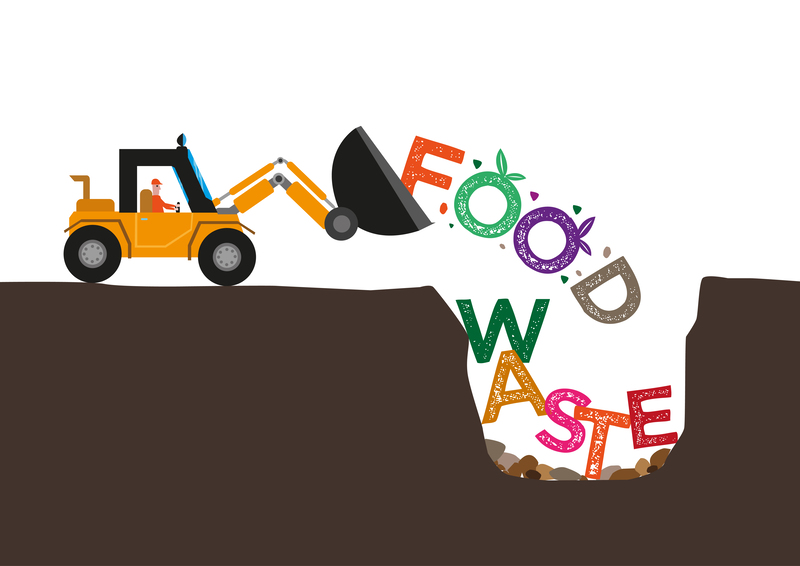Sustainable Energy Through Waste Conversion: A Pathway to a Greener Future
As the world grapples with increasing energy demands and the need to manage environmental pollution, the concept of sustainable energy through waste conversion has gained significant traction. Converting waste into energy presents a promising solution to address both energy scarcity and waste management challenges. This comprehensive guide explores the various facets of this innovative approach, delving into its processes, benefits, and future prospects.
Understanding Waste-to-Energy Conversion
The term waste-to-energy (WtE) refers to the process of generating energy in the form of electricity or heat from the primary treatment of waste. The conversion of organic or inorganic waste into usable energy promotes sustainable energy practices by reducing reliance on fossil fuels and cutting down on landfill emissions.
Types of Waste Used for Energy Generation
- Municipal Solid Waste (MSW): This includes everyday refuse from residential, commercial, and institutional sources, such as paper, plastics, and organic materials.
- Agricultural Waste: Plant and crop residues, livestock manure, and other by-products from agricultural operations represent a significant source of biomass.
- Industrial Waste: By-products from manufacturing and industrial processes, which may include chemicals, materials, and heat.
- Medical Waste: Though requiring careful handling, non-hazardous medical waste can also be utilized in energy production.

The Processes Involved in Waste Conversion
Several technologies can be employed to convert waste into energy. The choice of method depends on the type of waste and the desired form of energy. Here are the most common methods:
Thermal Technologies
Thermal conversion technologies harness sustainable energy by using heat to decompose waste materials. Key methods include:
- Incineration: Burning waste at high temperatures to produce heat, which is then used to generate electricity. Though effective, incineration must be managed carefully to minimize emissions.
- Pyrolysis: A process that decomposes organic materials at high temperatures in the absence of oxygen, resulting in the production of char, oil, and syngas.
- Gasification: Converts organic materials into carbon monoxide, hydrogen, and carbon dioxide, providing a cleaner alternative to incineration.
Biological Technologies
Biological conversion employs microorganisms to break down waste, primarily focusing on organic materials. Key techniques include:
- Anaerobic Digestion: Microorganisms decompose biodegradable material in the absence of oxygen, producing biogas and digestate.
- Fermentation: This process involves converting sugar-rich feedstocks into ethanol or other biofuels through yeast or bacterial activity.
Mechanical and Chemical Technologies
These methods involve physical or chemical processes to convert waste into energy or products:
- Mechanical Biological Treatment (MBT): Combines mechanical processing and biological treatment to segregate waste and produce a usable fuel.
- Depolymerization: Using chemical processes to break down polymers into their monomers, which can be further processed into fuels or other chemicals.
Advantages of Waste-to-Energy Conversion
The transition to sustainable energy through waste conversion offers multiple environmental and societal benefits:
- Reduces Landfill Waste: By converting waste into energy, the amount of material sent to landfills is significantly reduced.
- Diminishes Greenhouse Gas Emissions: Waste-to-energy processes lessen the methane emissions commonly associated with landfills.
- Promotes Renewable Energy: Replaces or supplements energy from fossil fuels, aiding in the transition to cleaner energy systems.
- Energy Recovery: Recover valuable energy from waste materials which would otherwise have no use.
- Circular Economy Enhancement: Supports the circular economy by utilizing waste as a resource.
Challenges and Considerations
Despite its potential, converting waste into energy is not without challenges. Consider the following factors:
- Efficiency: Optimizing the efficiency of energy conversion processes is crucial for maximizing returns and minimizing residues.
- Pollution Control: Proper mechanisms must be in place to control emissions and mitigate any potential pollutants.
- Public Perception: Educating communities on the benefits and safety of waste-to-energy technologies is essential for acceptance and implementation.
- Cost: Initial investments for setting up WtE facilities can be substantial, requiring economic analysis to ensure feasibility.

The Future of Waste Conversion for Sustainable Energy
Innovations continue to drive the field of waste conversion, enhancing efficiency and expanding applications. Here are some future trends:
Advanced Technologies
Researchers are exploring cutting-edge technologies such as plasma gasification and catalytic reactions to improve sustainable energy outcomes from waste.
Integration with Smart Grids
Waste-to-energy facilities are being integrated into smart grid systems for improved energy management and efficiency.
Policy Support
Governments worldwide are stepping up policy support for sustainable practices, including incentives for waste conversion projects. Policies that favor WtE adoption could play a significant role in the expansion of such technologies.
Global Participation and Collaboration
International partnerships and collaborative efforts are key to sharing knowledge, technologies, and best practices across borders to advance waste-to-energy initiatives.
Conclusion
As the world seeks more eco-friendly solutions to its energy and waste management needs, the potential for waste-to-energy conversion continues to attract widespread attention. By promoting renewable energy sources, alleviating landfill demands, and reducing greenhouse gas emissions, sustainable energy through waste conversion is emerging as a powerful ally in the quest for a greener future. With ongoing advancements and collaborative efforts, we are poised to unlock the full potential of this innovative approach to sustainable living.